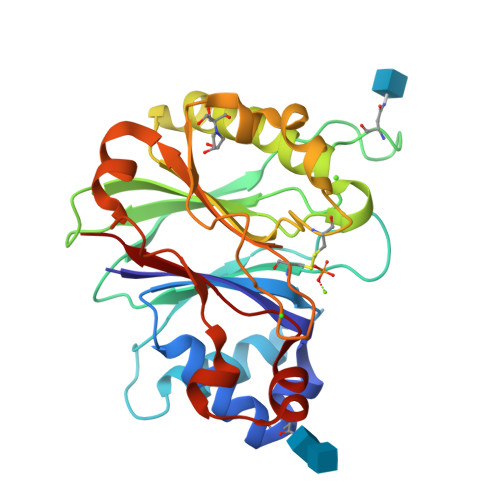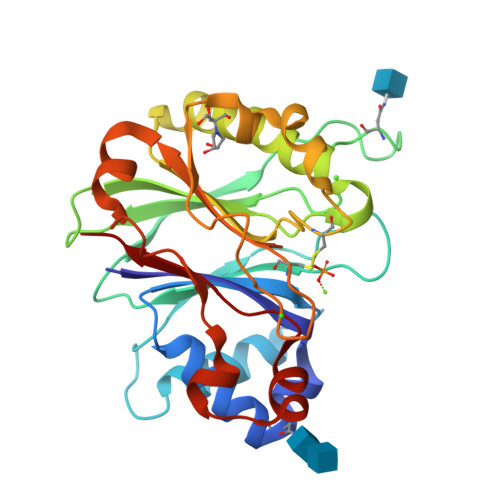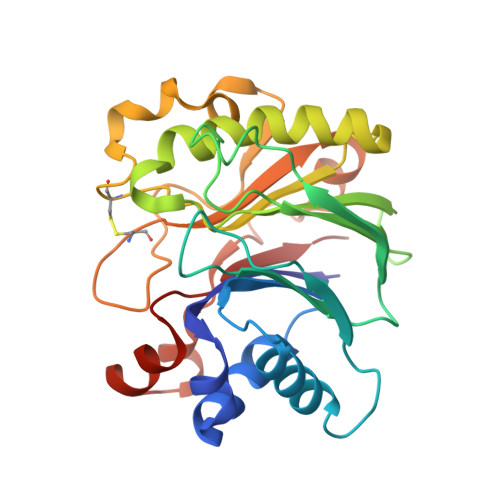The Structure of Human DNase I Bound to Magnesium and Phosphate Ions Points to a Catalytic Mechanism Common to Members of the DNase I-Like Superfamily.
Parsiegla, G., Noguere, C., Santell, L., Lazarus, R.A., Bourne, Y.(2012) Biochemistry 51: 10250
- PubMed: 23215638
- DOI: https://doi.org/10.1021/bi300873f
- Primary Citation of Related Structures:
4AWN - PubMed Abstract:
Recombinant human DNase I (Pulmozyme, dornase alfa) is used for the treatment of cystic fibrosis where it improves lung function and reduces the number of exacerbations. The physiological mechanism of action is thought to involve the reduction of the viscoelasticity of cystic fibrosis sputum by hydrolyzing high concentrations of DNA into low-molecular mass fragments. Here we describe the 1.95 Å resolution crystal structure of recombinant human DNase I (rhDNase I) in complex with magnesium and phosphate ions, both bound in the active site. Complementary mutagenesis data of rhDNase I coupled to a comprehensive structural analysis of the DNase I-like superfamily argue for the key catalytic role of Asn7, which is invariant among mammalian DNase I enzymes and members of this superfamily, through stabilization of the magnesium ion coordination sphere. Overall, our combined structural and mutagenesis data suggest the occurrence of a magnesium-assisted pentavalent phosphate transition state in human DNase I during catalysis, where Asp168 may play a key role as a general catalytic base.
Organizational Affiliation:
Architecture et Fonction des Macromolécules Biologiques, Aix-Marseille Université and CNRS UMR 7257, Parc Scientifique et Technonlogique de Luminy, Case 932, 163 Avenue de Luminy, 13288 Marseille cedex 09, France. goetz.parsiegla@imm.cnrs.fr






















